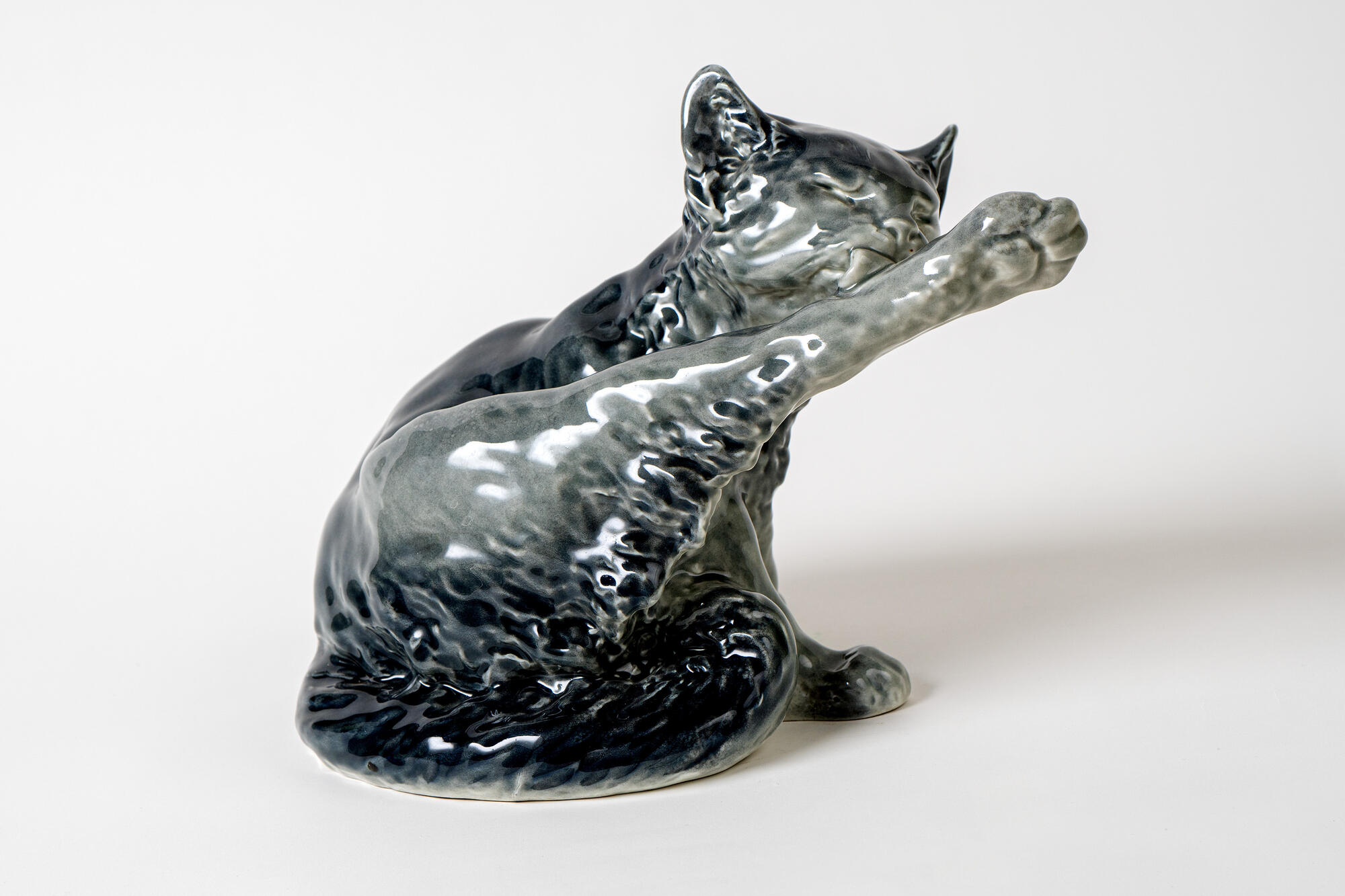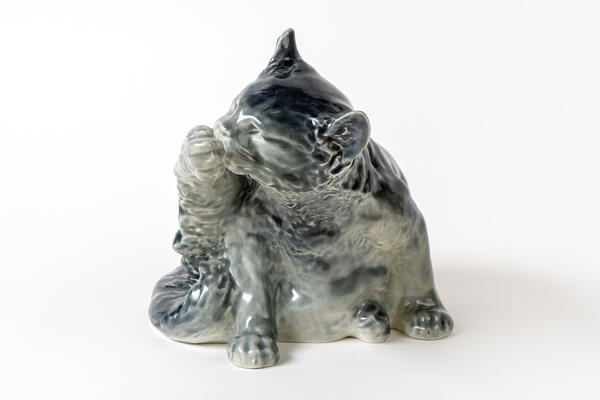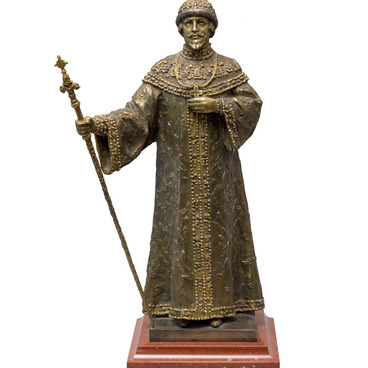A rare example of animalistic sculpture from the State Study of Emperor Nicholas II at the Alexander Palace is a figure of a cat created in 1903 after the model by the artist August Timus.
The texture of the material is thoroughly processed by hand kneading. The use of a gray-blue zinc glaze in the décor noticeably distinguishes this work from a series of factory works from the late 19th to early 20th centuries. The cat is depicted in motion, licking its hind paw, and is practically life-size. At the turn of the century, only four such figurines were produced: a silvery blue one (from the Tsarskoye Selo collection), two in the brown scheme and one made of biscuit. The silver cat was presented by the Imperial Porcelain Factory to Empress Alexandra Feodorovna for Christmas 1903. Therefore, it is very likely that the same cat is now on display at the Alexander Palace.
The creator of the figurine, August Timus (1865–1943), was a sculptor of Estonian origin. He came from a simple family of a miller. He was a non-matriculated student at the Imperial Academy of Fine Arts for two years, from where he graduated with an artist’s diploma. Until 1914, the master worked at the Imperial Porcelain Factory, created models of vases, china sets and sculptures. Timus collaborated with the famous firm of Carl Faberge, where he designed models of items made for the Court of His Imperial Majesty. Many of the porcelain and glass figurines that can be seen in the Alexander Palace were also created using the models of Timus.
The sculptor experimented a lot with materials (ceramics, glass — transparent, frosted), as well as with the shape of the works. A particular catch of Timus — as he himself called them — is caricatured animals. The master depicted animals (hippos, rabbits, bats) in various human postures. It is known that these figurines belonged in the State Study, which means that Emperor Nicholas II was very likely to be fond of them. They now occupy the same place they used to more than a century ago.
The texture of the material is thoroughly processed by hand kneading. The use of a gray-blue zinc glaze in the décor noticeably distinguishes this work from a series of factory works from the late 19th to early 20th centuries. The cat is depicted in motion, licking its hind paw, and is practically life-size. At the turn of the century, only four such figurines were produced: a silvery blue one (from the Tsarskoye Selo collection), two in the brown scheme and one made of biscuit. The silver cat was presented by the Imperial Porcelain Factory to Empress Alexandra Feodorovna for Christmas 1903. Therefore, it is very likely that the same cat is now on display at the Alexander Palace.
The creator of the figurine, August Timus (1865–1943), was a sculptor of Estonian origin. He came from a simple family of a miller. He was a non-matriculated student at the Imperial Academy of Fine Arts for two years, from where he graduated with an artist’s diploma. Until 1914, the master worked at the Imperial Porcelain Factory, created models of vases, china sets and sculptures. Timus collaborated with the famous firm of Carl Faberge, where he designed models of items made for the Court of His Imperial Majesty. Many of the porcelain and glass figurines that can be seen in the Alexander Palace were also created using the models of Timus.
The sculptor experimented a lot with materials (ceramics, glass — transparent, frosted), as well as with the shape of the works. A particular catch of Timus — as he himself called them — is caricatured animals. The master depicted animals (hippos, rabbits, bats) in various human postures. It is known that these figurines belonged in the State Study, which means that Emperor Nicholas II was very likely to be fond of them. They now occupy the same place they used to more than a century ago.





